In today’s episode, we will talk all about categories. I provide lots of ideas on how to work on categories with your students in a fun and interactive way. Get ready to gain tons of new info on how to bring more engaging and hands-on activities to your language sessions! Tune in below to learn more and be sure to check out the links and resources section at the bottom of the page!
What are categories and why are they important?
Categories are groups of items that share characteristics. Being able to categorize items is an essential skill needed in order to understand and develop language. Categorical thinking allows us to process and store information, retrieve the information, and then bank new information efficiently within our memory (Bornstein et al., 2010). Categorizing objects as well as being able to categorize words based upon similarities and differences are important skills to support language development.
Categorizing is essential for cognitive development, but may be a challenge for many children. Children with language impairment benefit greatly from working on categories in order to build language. Categorization is especially important for building vocabulary. Helping children to categorize information will provide them with a tool to allow them to better recall information, organize their thoughts, and build upon vocabulary.
Two Type of Categories:
When working with younger children, targeting concrete categories is more appropriate and then moving to abstract categories.
Ways to Target Categories:
There are several different ways to target categories within therapy.
- Simple Category Work
- Convergent naming
- Divergent naming
- What Goes Together
- What Doesn’t Belong
- Sorting
- Compare and Contrast
Research links
- Bornstein, Marc H., and Martha E. Arterberry. “The development of object categorization in young children: hierarchical inclusiveness, age, perceptual attribute, and group versus individual analyses.” Developmental psychology 46.2 (2010): 350.
- Hadley, Elizabeth B., et al. “Building semantic networks: The impact of a vocabulary intervention on preschoolers’ depth of word knowledge.” Reading Research Quarterly 54.1 (2019): 41-61.
Links & resources
- The Digital SLP Membership
- What’s The Function Resource
- Summer Elementary No Print
- Compare and Contrast: Volume 1
- Which One Doesn’t Belong?
Full Transcript of Podcast: All About Categories!
Episode 78: All About Categories!
Hey there! Today, we are going to be talking all about categories and ways to target categories to support language development. Before we get started, I did want to mention that this podcast is brought to you by The Digital SLP membership site, which is a site that features time-saving interactive digital resources that are all teletherapy platform-friendly. You can learn more by heading on over to thedigitalslp.com/digitalslp.
All right, let's jump right in and go ahead and talk about what categories are and why they are important. Categories are groups of items that share characteristics. Being able to categorize items is an essential skill that's needed in order to understand and develop language. Categorical thinking allows us to process and store information, retrieve the information, and then bank new information efficiently within our memory. Categorizing objects, as well as being able to categorize words based upon similarities and differences, are important skills to support language development. So let's look at a couple of real-life examples, and we can talk about how we use categories in those situations. So take going to the grocery store, for example. You make a list of all of the items that you need. And when you go into the grocery store, you're able to determine where those items are based on categorical thinking. You understand where to go in order to find refrigerated food, frozen food, cleaning supplies, etc. If you have difficulty understanding categories and how to group items based on similarities and differences, your shopping experience is going to be less than optimal. Another example would be going to a bookstore. If you're provided with a title and basic information about a book, you're able to find the book based on having categorical knowledge. If you have difficulty understanding categories and how to group items, then you might be wandering around the bookstore for quite some time.
Categorizing is essential for cognitive development, but it may be a challenge for many children. Children with language impairment benefit greatly from working on categories in order to build language. Categorization is especially important for building vocabulary. One study found that two-year-olds were better able to recognize new words when they knew more about the category, to which those words belonged. The study explained that dense semantic networks may support word learning because children are able to use previous knowledge about similar words within the same network, supporting them in learning new words. And that was according to research done by Hadley in 2019. Helping children to categorize information will provide them with a tool to allow them to better recall information, organize their thoughts, and build upon vocabulary. Now, there are two different types of categories. We have concrete and abstract. When working with younger children, targeting concrete categories is more appropriate and then moving on to abstract categories. Some examples of basic earlier targeted concrete categories may include animals, body parts, clothes, colors, food, letters, things like that. And then some examples of concrete categories, targeted with early elementary students may be beverages, coins, condiments, dinosaurs, flowers, and fruit. Now, some examples of abstract categories include things like emotions, things that are hot or things that are sticky, things that fly, and things along those lines.
Now let's talk about some ways to target categories within therapy. First up is simple category work. So before working on the typical category work, we tend to jump into with our students. We want to make sure that our students are able to demonstrate basic matching skills. You may work on matching identical objects or pictures with one another, and you can also have your students sort groups of objects or pictures into two identical sets. Next, there's convergent naming. That's when you're going to provide the child with similar items that fall within a category and then the child's going to name the category. So for example, you may say red, purple, and blue are all... and then the child will say colors. Another example might be something like sun, fire, and coffee are all... and then the child says things that are hot. We also have divergent naming and that's going to be when you provide the child with the overall category. And then they're going to name items within that category. For example, you may say types of transportation and the child provides things like car, bike, plane. Another example maybe you saying farm animals. And then the child responds with pig, horse, and cow. Another way to target categorical thinking is talking about what goes together. So having the child named two or more items that go together allows them to think about semantic relations between two words or objects. For example, they may name socks and shoes or French fries and ketchup. You can target this both expressively and receptively. So if you want to target this receptively, you can provide the child with three pictures of items and have the child select the two that go together. If targeting expressively, you could provide the child with a word such as gloves and then have them name items that are associated such as boots or coat. Another way that we can work on categories is by doing a what doesn't belong activity. So this is similar to talking about what goes together, but this time you're going to have the child select the picture or express an item that would not belong in that group. For example, show the child three pictures and have them select the one picture that does not go with the other two. And then you're going to have the child express why the picture does not belong. Another activity we can do is sorting. So simple sorting activities can be done by having your students sort items or pictures by function, feature, or even sorting into multiple groups. For example, you may have the child sort items according to their size or maybe to their color, or you might have the child sort all different animals into specific categories such as farm animals or ocean animals, zoo animals, there's lots of options there. Once all the items are sorted, then the child can look over all the objects or pictures and visually see how they all come together within their own categories. Another way to work on categories is through comparing and contrasting activities. So you're going to discuss how two items or pictures are similar, and then also how they are different. When you have the child compare and contrast between two different items that allows them to classify between the two words. If the child is encountered with a new word, they're more likely to learn the new word more quickly and deeply when it is semantically related to a known word. And again, that's going back to research done by Hadley in 2019. So you want to select target words that the child can semantically relate the words to already known words in order to support learning new vocabulary.
Now, if you are a Digital SLP member, I'm going to go ahead and throw out some resources that you have access to on The Digital SLP site. Don't forget that we do offer a free trial, free seven-day trial on the site. So if you wanted to try out some of these resources, you could go ahead and do that by signing up for the trial. There are many resources on the site that work on categories. So one of them is called What's the Function. Now this resource can be used in many ways, such as expressing object function or categories. Every time the student reveals a picture, you're going to have them name the category that it belongs to, and then other items within that category as well. You also have access to the No Print Summer Elementary Language Pack within The Digital SLP membership. And within that resource, there's a section called Describe It. And it's going to show you a picture of an item, and then you can have the student describe the picture and name its category, along with additional items within the category. There is also a compare and contrast resource, which is great for students in elementary school. You can work on looking at two different pictures and talking about how they're the same and how they're different. And the last one I wanted to mention was called What Doesn't Belong. Now this resource shows four different pictures and then the student needs to select the picture that does not belong with the others. Selecting the picture that does not belong is a way to target categories receptively. But if you want to add in an expressive piece, then you can have your student then think of something to replace that one picture with that would belong with the other three photos as well.
So I hope that this episode gives you a jumpstart on targeting categories with your students to support their language development, along with improving on their vocabulary development. Now, like I mentioned at the beginning of this show, you can head on over to thedigitalslp.com/digitalslp to learn more about The Digital SLP membership or to sign up for the free trial. If you'd like to access the show notes from today's episode, you want to head on over to bitly.com/TSSEP78. Now we have one more episode scheduled for the 2020-2021 school year, and that will air, let me see here, on June 8th. And it'll go up as usual, that's a Tuesday at 7:00 AM and then we will break for summer. So I look forward to connecting with you in one more episode of the school year.


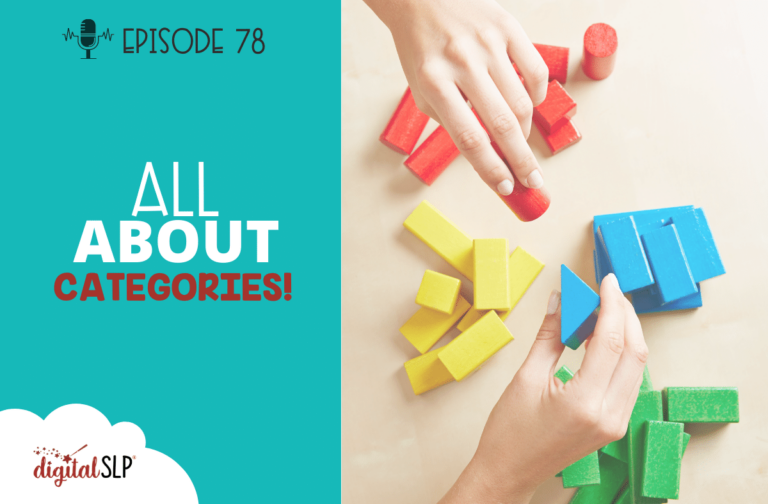



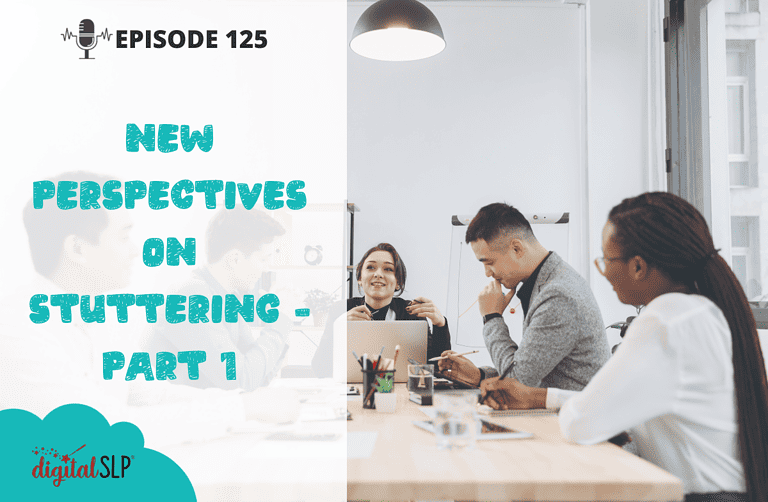

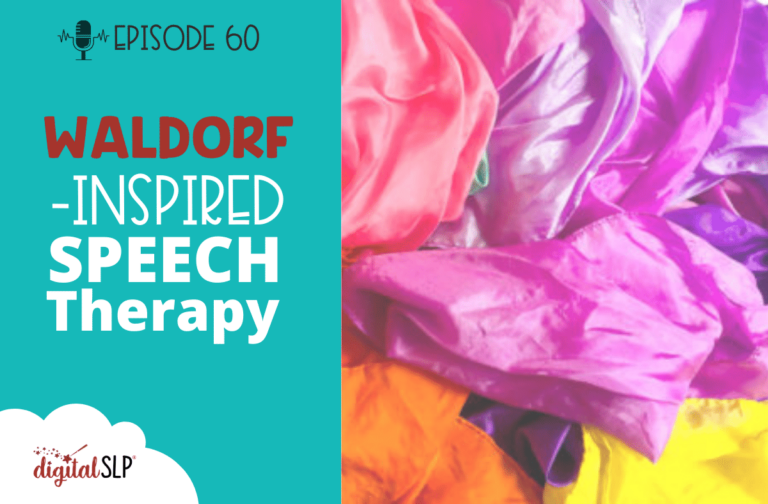
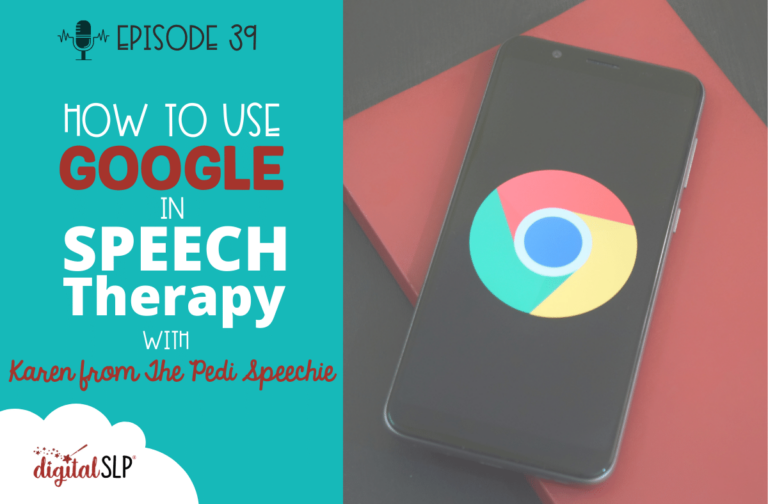
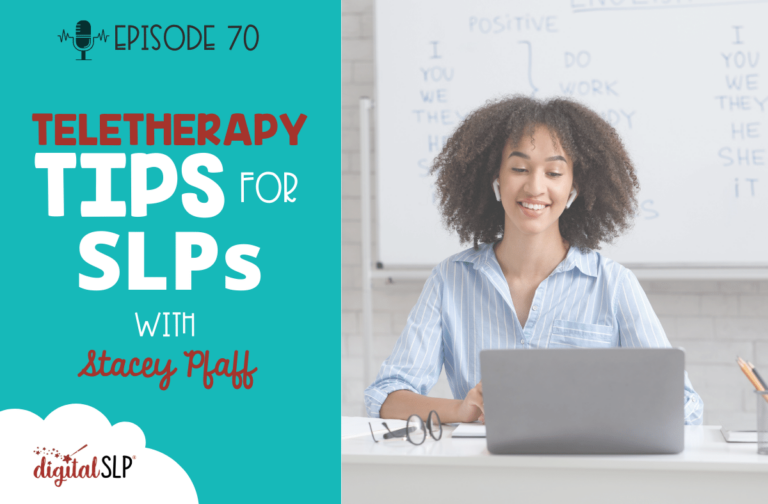
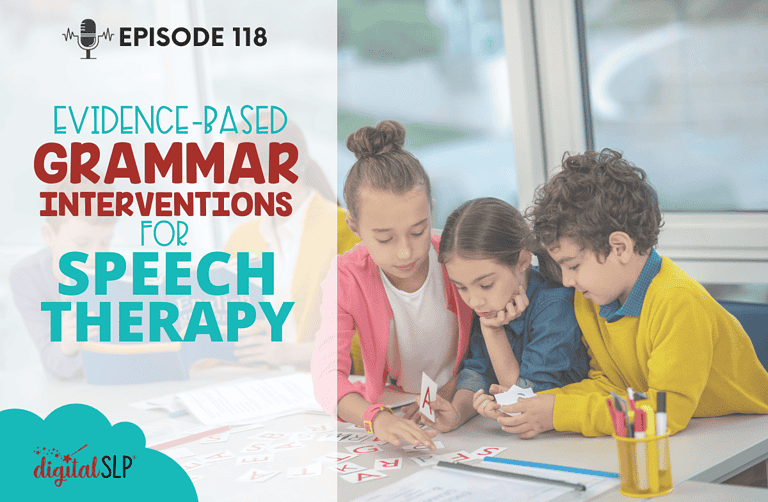

Recent Comments